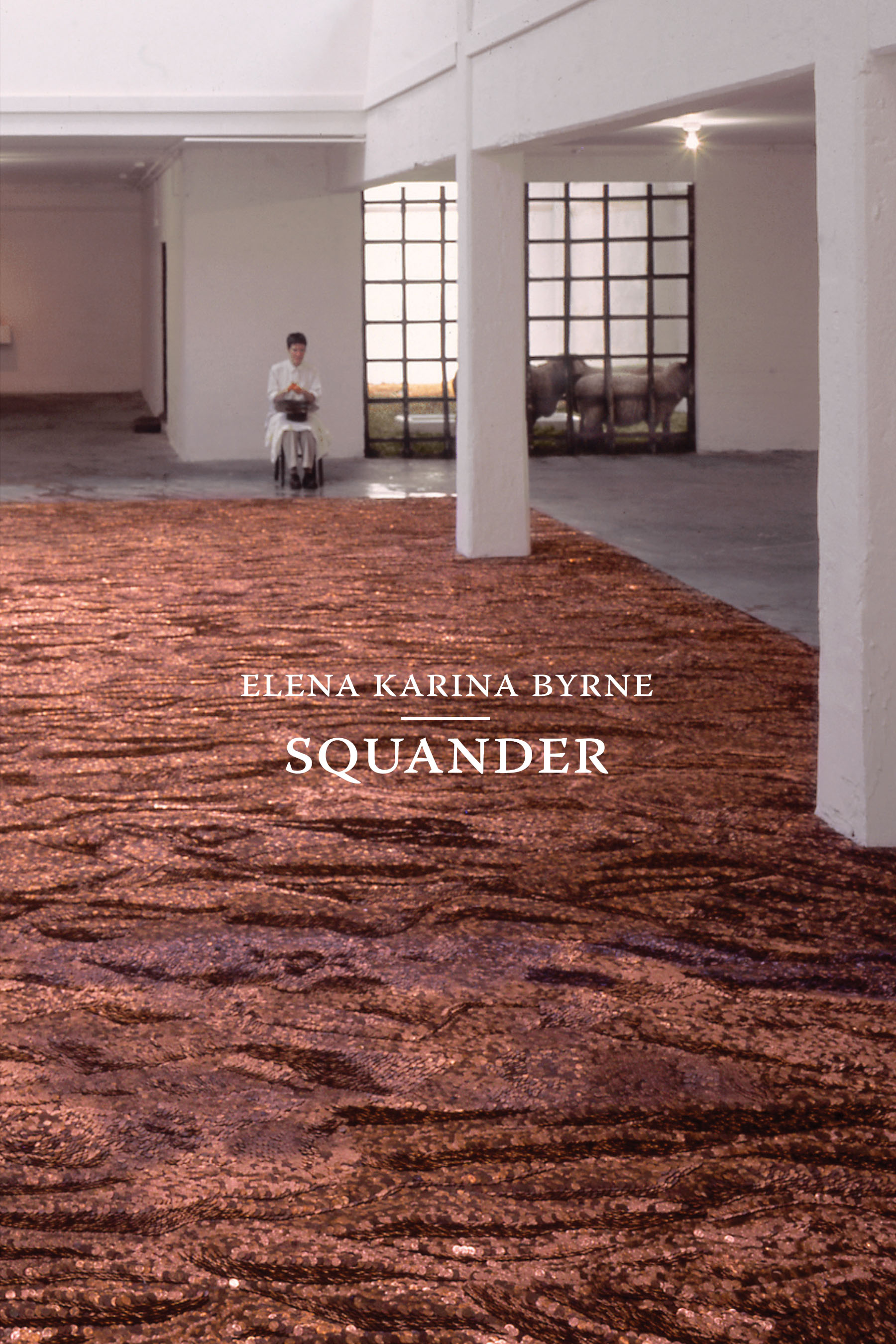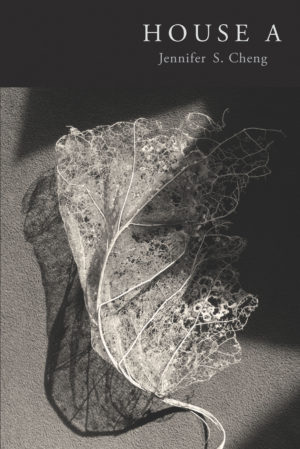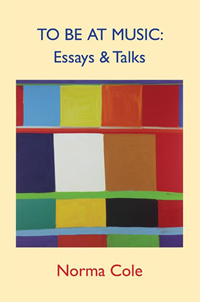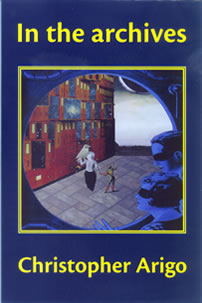Description
Squander occupies a place where “the mind’s upstairs windows [are] blown out”: a place of juxtapositional delight through sensory and conceptual dislocation. Its centripetal force arises from the risk of language and from a persuasion of alarming imagery. Poems based in word origins work as fables and poems based in dialogue work within a select concordance from authors and artists. The consequent subject’s meaning is diverted and new vantage points are created. Squander’s energized music, its alliance with feeling’s final rhythm “makes us complicit” in the re-awaking of language.
If you are lucky enough to be bewitched by Elena Karina Byrne’s brilliant poems, then you will travel across time, space, and the ocean of language. In her beautiful new book, Squander, Karina Byrne again douses the reader in her sparkle and luminosity, through poems triggered by Shakespeare, Amy Winehouse, Georgia O’Keefe, and Rilke. There’s a driving breathiness and breathlessness in Karina Byrne’s poems, as if a voice is haunting your ear, unveiling what a genius mind might see and feel through language. This is Karina Byrne’s deepest exploration of language yet; there’s no one writing like her and her voice is an essential one in American poetry.
Victoria Chang, author of The Boss
Ultimately the title of the book tells all—squander, be willing to give, even to waste words; cast the net wide: “O Obedience like a horse, we are / trained to the bit, mouth-made. Heresy. Here. Say” says Elena Karina Byrne, and she practices with enthusiasm such preachment throughout the book. The intelligence here is always willing to sacrifice itself to energy—“turn a plum into/an orange//word into words”—and the result is an unforgettable exuberance of poetry. And of an enchanting intelligence.
Bin Ramke, author of Missing the Moon
Fully recognizing that we are numerous, as are the snares and delights of the written word and the influences of history, Elena Karina Byrne’s “Squander” diligently investigates living in language—from attention to responsibility to knowledge—and creates a dedicated space for beauty to interrogate truth, encumbering our sometimes inexplicable world in a net of indelible lineages and connections.
Maxine Chernoff, author of HERE
About the Author
Reviews
Excerpt
Elena Karina Byrne’s previous poetry books include The Flammable Bird (Zoo Press) and MASQUE (Tupelo Press). She is currently completing an essay collection: Voyeur Hour: Meditations on Poetry, Art and Desire. A Pushcart Prize winner, her publications include Best American Poetry, Yale Review, Paris Review, APR, Poetry, Verse, Kenyon Review, Volt, TriQuarterly, Denver Quarterly. Former Regional Director of the Poetry Society of America, Elena Karina Byrne is Poetry Consultant for The Los Angeles Times Festival of Books, The Ruskin Art Club’s Literary Programs Director, and one of the final judges for the Kate/Kingsley Tufts Prizes in Poetry.
A brief interview with Elena Karina Byrne
conducted by Rusty Morrison
I felt such delight when I first read your manuscript and experienced your deft, surprising control of image as it reflects and refracts ideation. In your poems, new understanding comes to us through both mimetic and metaphoric surface tension, achieved with choices of diction, lexicon, sonic techniques, and more. A rich tension of excitement of surface elements is in fluid continuity with the deeper meanings of the work. Can you discuss your use of image and trope? Your approach to image and how it informs your craft as a poet?
I grew up with artists and visual art: contemporary/conceptual and performance art. My life began and will no doubt end in images. They are not only the primitive dial plate for the brain, but a perceptual means in which to discover and address ideation. I believe the use of imagery is a profound act of translation, a necessary process of attention that, in its associative leaps and asymmetrical weaves, destabilizes the course of logical thought in order to create new in-roads of investigation toward alarming, and sometimes more accurate moments of revelation.
The images often come first then procreate into an intimate puzzle… and like “the mouth that, in telling its secret, places itself at the mercy of an indiscreet listener.” (Leonardo da Vinci’s Notebooks) Imagery for me involves indirect enumeration, a wonderful challenge in chance and paradox, in recapturing and re-seeing. The idea means nothing without images––for me at least, because as they propose a concrete representation, they also truly characterize the abstract contemplation that leads to something “new” and vitally undiscovered. Imagery instigates. Imagery is cultural artifact. Imagery is consequence, deliberate and inadvertent. Imagery is the unresolved. Since clarity is not easy for me, imagery is my best vantage point of passionate departure.
One could argue that images are the only tools for innovation. I laugh when someone thinks cutting language or moving lines and words around on the page makes for innovative writing. Those are, for me, merely clever technical exercises. But, there’s an inexhaustible warehouse of images (tied to memory, emotion and acts of cognition) unique to every individual. Imagery provides endless polyvalent associations to a life both lived and imagined. Images create a permeable layer between what is said and what is felt, between what is known and what is unknown. This involves a self-interrogation that perhaps relies on speaking the difficult language of intuition.
At a very young age, my mother taught me the great art of intuition by asking me to describe the art shows. I didn’t have the vocabulary, so I “saw” analogous interpretations. Like a painting, each image carries more than one allegory on its back––and each provides a visual space and a means in which to open more doors and windows in the cavernous cinematic house of the brain. With the metaphysical domain of an inside and outside, images imply a perceptual on-going action, a timelessness. Trope’s Latin from Greek tropos origins means to turn…there, imagery’s figurative means to set the metaphors turning in motion.
As a hyper-energized Tomboy and awarded athlete, I also developed a body-physical relationship to the world and knowledge of its parts. I think language is merely one tool that carries and characterizes both our abstract and literal relationships to knowledge as the narrative tangent to action and sensory experience. It too is a very physical thing. I think through imagery, so my choices of diction, lexicon and sonic techniques are there to provide rhythmic variety (the way a film changes pace) and tension to enhance the picture. The use of sounds in my writing process is key. Music persuades. Sometimes I feel like the aural integrity brings the images to life on the page in a way my rational mind could not do. I guess you can say it’s a synaesthetic copulative dance. Sound can be three-dimensional as well…
With so many poets moving away from image, I’d like to challenge myself to write an entire group of poems that create an action and narrative solely by the theatrical accumulation of visuals…no connecting verbs, no accompanying interpretation or philosophy. A Hockney set of polaroids.
Have you ever played “capture the flag?” That’s how I feel when I write: constantly moving at high speed within the confine of the mindscape, all the while seeing the landscape, the other runners, peripherally, the flag bright in your fist as you fly down the field.
As I understand the text, there are two types of poems: “Fables” (which reflect, to some degree, upon word origin and/or mythology) and “Concordances” (which might consider authors, artist fragments, and/or mythology). A reader need not become aware of these two categories as she reads the text in order to gain a full and satisfying experience of these poems. But the intrepid reader who appreciates perusing “Notes” at the end of a work will come upon these two categories and will see that poems receiving notes are listed under one or the other. Not surprisingly, there are more poems under the category of “Fables” that obliged you to offer notes. Could you speak to each of these categories? How do they each engage your intuition differently? What did each offer you as your wrote, and how were their demands upon you different? Was the order of the book influenced by this difference?
When starting Squander, I decided I needed a new engine for the poems. I became obsessed with word origins early in my career, how their radiating ties with history and odd language developments lead me to reinvent. I love to do research as a kind of warm-up before writing. Besides providing information, research forces me to approach my subjects from a liminal threshold. The original old version of the Dictionary of Phrase and Fables instigated my desire to dialogue with the material, just as my creating my own random concordance of artist fragments allowed for a kind of free interchange dialogue. Juxtaposition lies at the heart of this experience. It’s a kind of new cartography chronologizing the wayward imagination. It was also my way of resisting a straightforward characterization of what I wanted to say––it demanded of me an indirect look, an arrhythmic unraveling, which in turn, created (I hope) a more urgent sense of immediacy to the poetic experience. I hate complacency and so like to make myself uncomfortable at first. In the “I, she, me, you” equation there is a fifth self-voyeur who gets bored easily.
The Fables helped me move away from the purely personal, subjective side of poetry. The Fables, performed a rite of passage to real and imagined meaning, to the occult counterfactuals presented, according to its author. I was interviewing the facts in order to find a new fiction. This became a kind of wrestling match. The timeframe and the emotional overtones came clear during the process. That was important for me: I like a poem with some semblance of a heartbeat! In her book Remote Control, Power, Cultures and the World of Appearance, artist Barbara Kruger says television “sells time.” Poetry does this too—differently, sometimes the way a thief sells his own art… own heart.
The Concordances provided a language courtship and involved a form of ventriloquy coaxed from the extracted language fragments. This occasionally created a kind of perceptual parody like Rauschenberg’s Erased de Kooning Drawing, beginning in erasure but finding it’s opposite arena of provocation. The natural (it felt natural ) collaboration became a re-contextualized, often passionate, sometimes ambivalent language course of action conjuring a new consciousness for each text. The concordances also created a combined voice, a new persona with a new body, “all translated into the language of the limbs.” (Plath) I could have written hundreds of these, but had to stop.
You are so accomplished at drawing the most relevant and provocative quotes to incorporate in the body of your poems. This is not an easy task! If the quote is too common, the reader is dulled. If the quote does too much work for the poem, is too complete in its performance, then it also dulls the work. There’s such an exacting balance needed in selecting just enough to engage with your text enticingly, as your poem lifts that language into its own arenas of thought. How did you work with these challenging issues in selecting your material? What is the impulse, or what guiding wisdom allowed you such deft selection? If you are willing, you might tell us which poems gave you especially interesting or aggravating challenges and why, and/or which poems surprised you and taught you unexpected approaches to this kind of work.
I try to be very aware, very wary of quotes that are too familiar or more powerful a promise than the text provides. Again, as with Masque, quotes engendered poems and became a triad’s third voice for me, an additional format for the internal dialogue with the external impulse of language. I was often called the queen of quotes after that, yikes! In regard to the Concordances, the required process I created was this: write down 4 pages worth of random fragment-quotes (no full sentences), nothing too poetic or familiar, sometimes even mundane, nevertheless quotes that instigated action or a sense of declaration. Then I studied the pages to find one fragment that would begin the poem…from there I added my own line or two as a follow-through thought (an implied logic), then a line from the artist, then my own etc., etc., until a new consciousness was created from the language interchange and eventually, the subject evolved from that¬¬–– a little like a found poem, except the lines I created had to be part of an unexpected forward-moving direction, away from the artist text. Sometimes this proved to be arduous. Once the process started however, it felt very fluid. The most difficult ones involved a writer or artist I was emotionally tied to, too close too, i.e. Roethke.
When motivated, I work fast and I thrive in chaos. Noise doesn’t bother me; it may even instigate action. Hindrance oils the machine. Excess feeds the communion with language. Even doing research becomes a hyperactive, intuitive art. The Fables engaged my intuitive understanding of how antiquated and disparate things are tied together, unified to make one whole definition. I had to create, out of the old, a new definition for each object. I found myself rocking when writing these, (“in the zone?”) as if I was rowing toward the subject, conjuring, animating, physically pulling something out of obsolescence in bringing forth the askew revelations. Almost as if I found a way to best use what was malfunctioning in my brain. I’ve now learned to trust the almost blindfolded walk through subject and emotion.
The order of Squander was determined by the fact that much of this book was immersed in language play and language’s relationship to the speaker… who and what was being addressed. Three sections present three quotes that indicate the overall trope. Language is actually a three-dimensional material like clay. Language sees. Language falls between intimacy and anonymity. It is erotic for me. Since language begins in the body (“Language is a skin”-Roland Barthes), it can be considered another appendage.
Of course, the quotes in the text will give us some answer to this question, but you might say more about this: what authors, or artists, musicians, or workers in any field of creative endeavor, do you feel most kinship? Whose works have stayed most relevant to you as a poet and thinker? and why? Some may be quoted in your work, some not! Please feel free answer whatever aspect of this question that your intuitions bring to mind.
Immersed in visual art, I thought I was going to be an artist like my parents and my brother until a teacher introduced poetry to a class of 13 year olds. My first loves were Edna St Vincent Millay, Sylvia Plath, Pablo Neruda, Keats, fiction writers Kobo Abe, Ionesco and Dostoyevsky. A Sarah Lawrence poetry upbringing brought me fresh obsessions: Hart Crane, late and mid-career Theodore Roethke, Marianne Moore, Emily Dickinson, John Berryman, Wallace Stevens, too many contemporary poets to mention… Dickinson for formal surprise, Crane and Hopkins for music; Roethke and Moore for fresh approach/interchange within a topic; Berryman for line break and diction, the perfected mundane, Steven’s physical philosophy, “pheasant disappearing in the brush”…
Dada artist Hannah Hoch turned me upside down with strange joy. I paint and make collage art and believe much of my writing is a collage-based endeavor, especially my early work that always began in fevered fragments (with quotes and torn-out images) kept in notebooks… so it comes to no surprise that I also love Robert Rauschenberg, Joseph Cornell and local box artist/poet Gordon Wagner. At different stages, I became aware of artists like Kandinsky, Van Doesburg, Olga Razanova, Malevich and Kurt Schwitters who wrote sound and experimental poetry and collaborated with avant-garde poets. Paul Klee wrote that he had to decide whether to be a poet or an artist.
Peter Blake was a family friend (we lived in London at the time) and a fabulous British painter and collage artist whose work had a darkly whimsical, hallucinatory quality. His then wife Jan Haworth Blake was also amazing…she created flowers with human faces, the sewn life-like boxer on the front of the Sgt. Pepper’s Lonely Hearts Club Band, a cover they co-created.
Artists Ed Ruscha, John Baldessari, Billy Al Bengston (had a crush on mom), Ed Moses, Vito Acconci, and Jack Goldstein (a very close family friend), Judy Chicago, Barbara Kruger, and Joseph Beuys were all part of the art fodder the family consumed. Some of them were either father’s (or his best friend Rico LeBrun) students or attended his school, The Jepson Art Institute, or the Chouinard Art Institute (as did Robert Irwin & others), where dad was head of the drawing department. The family attended many art openings and performances. I remember Chris Burden laying in the street covered in a tarp. Being the only “child” in the audience, I was an excited, yet uneasy participant. My genesis was the momentous inexorable. For some reason I understood the unspoken language, the subtext of contemporary art. Without expressing this until after high school and AP English, I knew I had obtained something that enabled me to conceptualize, and without realizing it, I became a Cartesian observer certain perception was already embedded between the thing observed and the observer.
Also, I fell in love with women artists Sophie Calle, Jenny Holzer, Cindy Sherman, Lola Alvarez Bravo, Atsuko Tanaka, Louise Bourgios, Eva Hesse, Miranda July and especially Ann Hamilton. Tony Oursler’s installations and videos and Boyd Webb’s giant wall-size installations have greatly influenced my work.
My very early bible, a book now out of print: The Discontinuous Universe: Essays in Contemporary Consciousness. And music? I love a wild variety of music and sometimes play Brian Eno or classical when I am writing. Oh, and, for another visual discourse, I love Gaston Bachelard, William Gass, Gabriel Garcia Marquez, Susan Sontag, Wittgenstein, Andrei Tarkovsky, Jean-Luc Godard, Ingmar Bergman, Jean Cocteau, Maya Deren, Bill Viola, Paolo Sorrentino, Wes Anderson…
Would you tell me a bit about yourself? Anything you are willing to share that might not be in your short bio that is published in the book? Anything that might have interesting, tangential relation to the book?, or anything that doesn’t!
I was a preschool teacher for many years and loved it. I’m an occasional painter. I’m an unconventional gourmet cook! I was a private chef and caregiver for 5 years. I collect masks. I own original works by Ann Hamilton, Sophie Calle, and others…I love Japanese prints, often dreamt I was a Geisha in childhood. I am crazy about astrophysics & deep space & deep sea biology… in another life, I’d like to conduct brain research! UK poet and performer S J Fowler (editor of 3AM ) is working with a variety of people in and around Neuroscience… Brain mapping and more…
I’m pleasantly jealous and excited to see more of his findings.
When I was a pre-teen I led a group of kids around the neighborhood, breaking into backyards and houses, just to see what was there. In high school Mother and I attended Waiting For Godot featuring actor, dear friend Bud Cort (Harold & Maude). I shouted his name so he would know we were there. The only other time I did that I was seven: As Elvis glided past the Palm Springs corner in his white Cadillac convertible, I screamed his name. He stopped and turned to say hi. My dress was the color of a blue exhale.
You selected the artist whose work we’ve used in the cover design for this text. And during our conversations about her work, you chose this particular image from her work for the cover design for this book. Would you say a little about your relationship with Ann Hamilton, and why you wanted her work on your cover? And would you speak to the image you selected, and if / how the cover reflects your desires?
I was in the MOMA bookstore in NYC and discovered a poster of a woman in a black dress in a black background with a tumbleweed for a head—It was a poster from Ann Hamilton’s stunning “body object series #5 sagebrush.” After researching her work as an installation artist and her relationships to poets and poetry text, corpus of books as objects, the animated relationship between body figure and object, videos, weavings, and sound animations, etc…I found what I felt was a real connection between my interest in art and poetry, “Sound, voice, touch motion, extension and moral recognition…The figure made by practices of making themselves.” (Susan Stewart, Poetry and the Fate of the Senses) I now found my new favorite artist and I wanted that poster image for the cover of Masque.
By pure happenstance (my son calls it synchronicity) I called friends Angie Estes and Kathy Fagan to chat. When they asked what book cover I was going to use for Masque, I flew into my story of this fabulous artist and her image, and that I wrote the gallery to see how I could find her. Hearty laughter came through the phone: “Elena!! We know her and she teaches here!” I couldn’t believe it and instantly wrote my woo letter… the image was already used for a Susan Stewart essay book, but I could have another: flectere an Iris print marking the 1999 Venice Biennale installation myein. It’s beautiful and haunting.
Then, as AVK ARTS (my namesake/godmother’s non-profit foundation) Executive Director, offering funding for UCLA’s CAP Artists in Residency Program created by the brilliant Kristy Edmunds, I found another Ann connection … I casually mentioned, at the end of our meeting, that I was in love with artist Ann Hamilton, and again, my words were greeted with some cheerful laughter. Kristy had just curated a show at the Park Avenue Armory in NYC. Ann Hamilton’s show “the event of a thread,” involved a massively large-scale installation and combined, in their words, “the ephemeral presence of time with the material tactility for which she is best known.” It was our first time meeting in person. It was like meeting Einstein or the Beatles!
Ann graciously offered another image for my new book Squander. There were many options, but Rusty and I wanted to find something that didn’t have too direct a referent. Reviewing the video stills and other images, I found privation and excesses, 1989, mixed media installation. Courtesy Ann Hamilton Studio.
The floor image is a large room-sized field of pennies set into a skin of honey and Ann is at the end of the room wringing her hands in a hat full of honey. The actual installation also included two handmade mortar and pestle “grinders”, one of them grinding teeth, the other grinding pennies… the contrast of pulverizing sounds of the grinders and “the background to the lathering movement and sloshing sound of hands in honey…” Three sheep crowd a window’s view. I knew (body and mind) that was it, here, through language “Where the installation juxtaposed the animal economy of honey to the human economy of money…” Ann Hamilton
There’s an overlap cognizance, “here into presence, there into absence,” (Heidegger) and a fresh lexicon of interrupted narrative and spatial action. So many of her works, through an animated relationship between language, object and figure, recognize that obsessive/repetitive, generative event.
When you open her website Annhamiltonstudio.com:
“Cloth is the body’s first architecture; it protects, conceals and reveals; it carries a body’s weight, swaddles at birth, covers in sleep and in death. A patterned cloth symbolizes state or organization; a red cross stitched onto a white field is the universal sign of aid. A white cloth can be a ghost, a monster or a truce. John Constable described the sky in his paintings as a ‘white sheet drawn behind the objects.’ When we speak of its qualities, we speak of a cloth’s hand: we know it through touch. Cloth is the hand that is always touching. Its felt experience is evoked and described by the other hand that we always inhabit, that of language.”
-Ann Hamilton
The last essay in my book Voyeur Hour: Meditations on Poetry, Art and Desire is about Ann Hamilton, tentatively entitled “Surrogate of the Ventriloquist’s Vent”
If “blue is the color of the mind in borrow of the body,” (William Gass) then Hamilton’s mind borrows the action of the audience-body for a black and white beginning one only imagines in language conjugation… I can’t get enough of her work. Inspired, I shall vowel may way forward…
. . . in the opening poem, ”Language,” suggests that, out of deep unease as to life’s sources, poetry dynamizes language into emotional form and hurls it against discourse’s language-cage, seeking an atmosphere as absolute as it is rarefied and infinite.
. . . this collection is a wise love affair that both clings to mean and lets it go. At times it reads almost as an erasure or ellipsis; the poems hold on to meaning with one hand while the other works to set it free. THIS! This quality of loving and letting go makes the collection a ‘must read.
Shakespeare, Where We Earned Our Names
and some minx’s token
laid on our tongues, some civilization’s content so absolute
we can row a canoe seaward into its azured vault vocabulary,
salt backwards in minutes to
Name him, that what he gave us was more knowledge
overwhelmed by seeing us,
a violent sorrow
and this sorrow that I have by right
is yours, man and woman both
Empowered him out of nature
in some loneliness-allure crossing the face twice,
like the cuttlefish turning over its colors, like
blame due of blame
that first lights on him, then us, following in
our bodies’ grammar, found
by our carnal stings or unbitten lusts
word over word, the ugly part of beauty
moved from the gut to resume the shape
of Cordelia in his arms,
unfinished storm-flower where the darkness folded up
and you asked yourself Will it eat me?
Like the feeding earth worm of conscience swallowed by its
own red sound seas incarnadine
Faith, half asleep in your arms, that
What you know, you know always
inward breaks
even before it is named, even before it benchmarks who you are.





